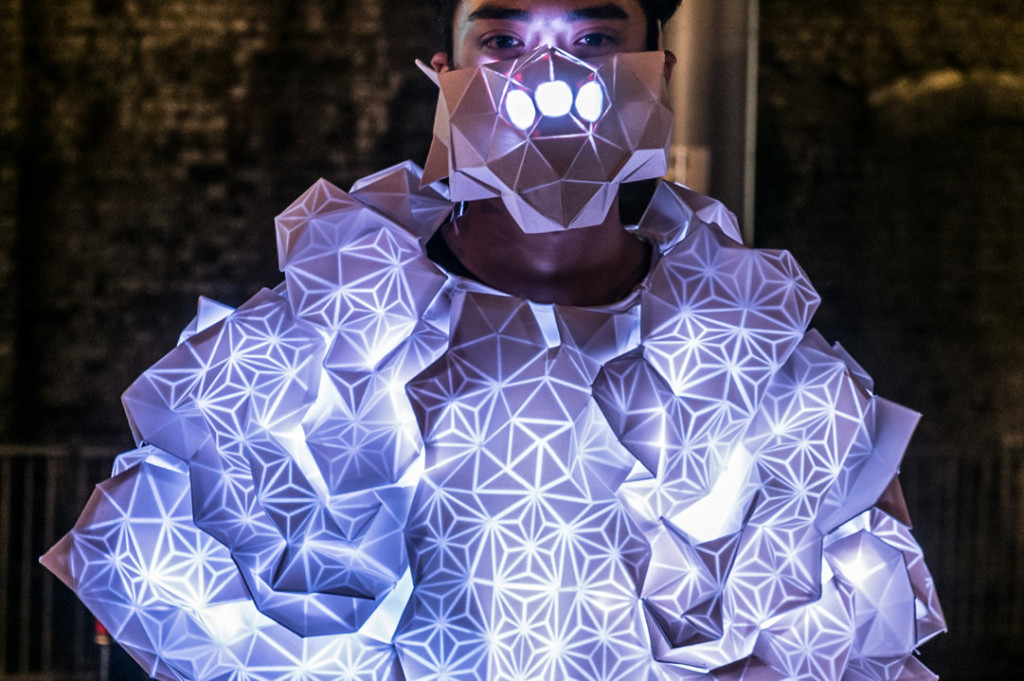 Human Sensor by Kasia Molga
Human Sensor by Kasia Molga
In this week’s seminar, someone proposed that we might trust data at the expense of trusting our own senses. Nowadays, electronic sensors are all around us and have become ambient parts of our lives. I check the weather app on my phone more often than holding my hand outside the window. I trust “expert” and scientific data about the weather, distilled into a number of degrees, more than my own sensations, even though I’ll only be feeling my own sensations when I step outside.
With the advent of consumer microcontrollers like the Arduino, electronic sensors have become more widely available. The Arduino has been adopted by the maker movement and digital arts, as it’s taught in our Physical Computing module here at Goldsmiths. Sensors are also being used throughout industry, with movements like the Internet of Things (IoT). I worked for a company that created an IoT platform, and I watched us shift our focus from hobbyists to industry. From the maker movement to Industry 4.0, people have used sensors to promote the narrative that we can more easily understand and control the world.
For electronic sensors, all physical phenomena can be translated into voltage levels from 0 to 1. Sensations become numbers. In her chapter “Sensing Climate Change and Expressing Environmental Citizenship,” Jennifer Gabrys writes:
“The basis for understanding environmental change as change is understood through modes of systematicity that focus on particular variables over time, so that shifts within variables establish the evidence for degrees and intensity of change.”
This creates the illusion of understanding, but is biased by the tools and systems of measurement. This is also reductive, ignoring many of humans’ subjective senses. The complex behaviors of the world are reduced to what an Arduino can sense through commercially available sensors. In class, we talked about how computational art that uses sensing aestheticizes the data. Processing sensory data through a microcontroller also aestheticizes it. At my job, I implemented graphs which translated raw data into beautiful infographics which aimed to create a sense of understanding.
Sliding down the spectrum from science to art, we looked at Kasia Molga’s artworks “Coral Love Story” and “Human Sensor” in class. Our class seemed to critique the pieces more on an artistic level than a scientific one. If an artist aestheticizes a problem (coral bleaching), does it lose its scientific validity and impact? I wasn’t aware of coral bleaching before watching the video, and now I am. But I don’t feel compelled to do anything about it, or know that I even can.
Similarly, “Human Sensor” aimed to convey air quality into a performance, but the performance itself was quite abstract; it relied on a projection which described the piece and its message. I often find that the wall text of an artwork does a lot of conceptual lifting, and should be considered part of the piece. Also, perhaps there wasn’t a direct sensory connection from the air quality to the dancers’ suits. I think that performances don’t necessarily have to have working electronics to make an impact. The audience only sees what’s on the surface, and the artist shouldn’t need to create a working electronic system if that’s not the focus of the piece. (We discussed this in Atau Tanaka’s module on live performance.) In this case, the aesthetics and the message was more important. Art can be speculative.
Art is commonly considered subjective, and science objective. We trust science, not art. I’m interested in finding the midpoint where an artwork is aesthetically pleasing and digestible to humans, but still conveys a scientific message.
References
Gabrys, Jennifer. Program Earth: Environmental Sensing Technology and the Making of a Computational Planet (Electronic Mediations). Minneapolis: University of Minnesota Press, 2016.